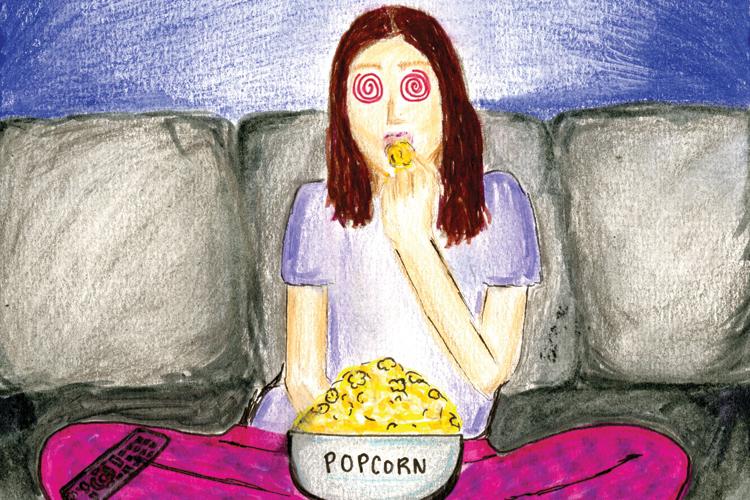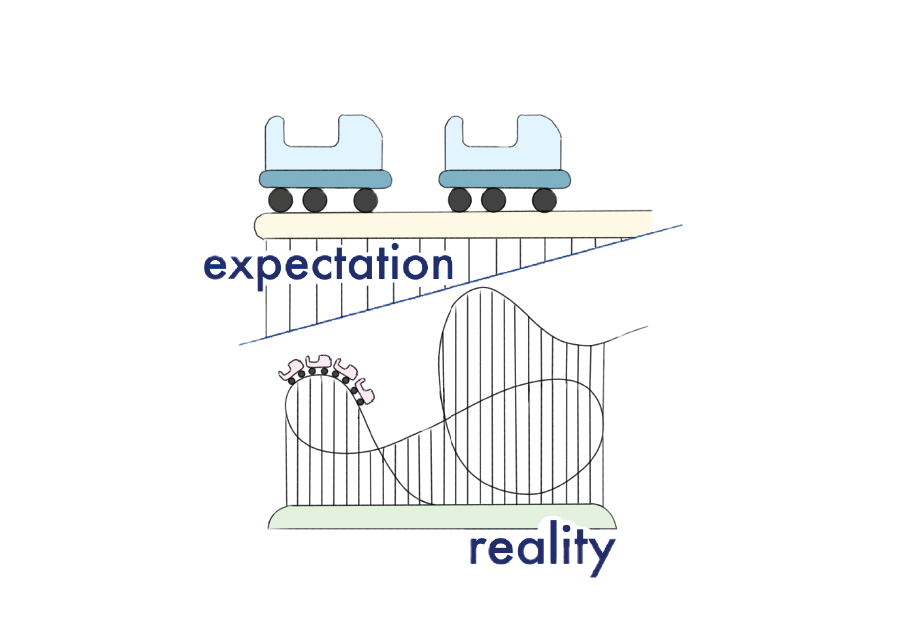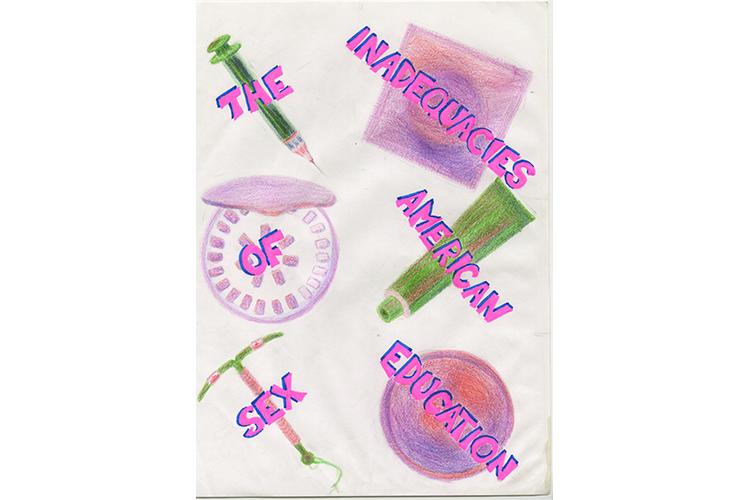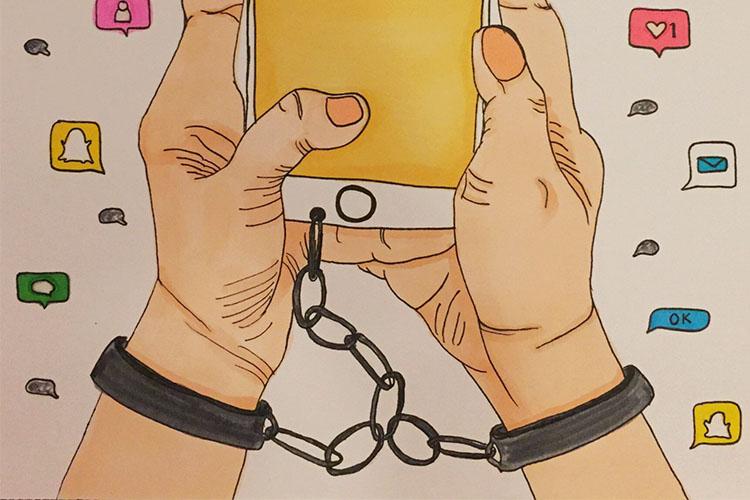//PICTURED ABOVE: Today, it’s hard to find a movie or T.V. show that doesn’t seem to push a certain agenda, whether it’s obvious or discrete. As viewers, we must learn how to filter out these messages and form our own opinions.
People often say that the newspaper is a dying industry. While I personally do not agree with that stance, there is no denying the fact that there are many more outlets through which people now receive their news. Ever since Steve Jobs stood before the American public on Jan. 9, 2007 and announced Apple’s plans to release a new, foreign product—otherwise known as the iPhone—the world has never been the same. Although this event occurred just over a decade ago, an immeasurable amount of change has happened since then.
For one thing, the rise of smartphones has skyrocketed. Nowadays, it is an extreme rarity—almost unheard of—that someone might be seen sporting a Motorola RAZR or the 2007 Blackberry Curve.
As the general public slowly began to accept these new forms of technology, they became more open-minded about where they received their news. Fifty years ago, there were four major news outlets: the newspaper, the television, the radio and word of mouth. Meanwhile, in the 21st century,
it is not uncommon to see people basing their judgments and opinions on various news apps, websites, magazines and even movies.
Now, movies do not serve as news outlets in the sense that they provide the public with information that they wouldn’t have otherwise known. However, in the past few years, the film industry has been seen taking a bold approach towards various political and social issues. By tackling these matters head-on, the industry has shown that they are willing to shout their beliefs from the rooftops—although they may not always be the most popular beliefs.
Although some of these movies do portray an effective message, not all are successful in accomplishing this goal. This allows the question to arise as to whether or not the canon of “movies with an agenda” is getting watered down.
Recently, there has been an increased buzz around the Netflix original T.V. series “Insatiable.” Earning a whopping 11 percent on Rotten Tomatoes, it is not hard to see that this show has not been a fan favorite. And reasonably so.
Although the show attempts to address the very relevant issue of body-shaming, the script, along with the less-than-mediocre acting, has nearly the opposite effect. After protagonist Patty, portrayed by Debbie Ryan, is punched by a homeless man of all people, she must have her jaw wired shut for three months, resulting in her losing a significant amount of weight. She is then transformed into a pretty and popular girl seemingly overnight.
Although I’m sure that it was not the intention of the producers to promote fat-shaming, the show arguably turns this all-too-real issue into something of a joke. The fact that the protagonist loses weight from having her jaw wired shut suggests that the act of losing weight can be as easy as getting punched in the jaw—when in reality, this is not true.
Additionally, the show seems to glaze over the issue of bullying altogether. Despite the fact that Patty is tormented because of her weight, once she drops 50 pounds, she is suddenly transformed into the new Regina George. However, unlike Debbie Ryan’s character, not all victims of bullying can simply undergo a physical transformation and magically become the most popular girl in school.
This seems to be the general opinion of the public. According to Variety, a weekly American entertainment trade magazine and website, “neither the show’s punchlines nor its characters are sharp enough to transcend their clichéd foundations.” The very exaggerated, often silly plot and events ultimately take away from the seriousness that the show is trying to tackle.
Ultimately, it boils down to the fact that “Insatiable” does not have many redeeming qualities. For all of the very real issues that it seems to highlight—such as body image, lack of self-confidence and bullying—it doesn’t seem to offer any tangible solutions.
On that note, “13 Reasons Why” received lots of feedback—both negative and positive—when
it first hit Netflix on March 31, 2017. Although show producer Selena Gomez was attempting to encourage dialogue about the effects of bullying on younger generations, this attempt ultimately backfired.
First and foremost, “13 Reasons Why” romanticizes the idea of self-harm. The whole premise of the plot is a dead girl speaking to all those who have ever wronged her with the aid of cassette tapes. The fact that a love story is also entwined into this already-complicated plot only further complicates the storyline. By incorporating these elements into a show that focuses on such a sensitive issue, “13 Reasons Why” ultimately glorifies the idea of suicide.
Further, the show fails to bring up any discussion about mental illness or depression. If the producers are going to put out a show whose plot revolves around a high school girl committing suicide, then they could at least address the issues which drove her to do so and how to prevent these in the future. Instead, the characters constantly play the blame game as they all try to dodge responsibility for the consequences of their actions.
However, not all productions have ineffective agendas. In the past year, in particular, there has been a spike in movies with messages promoting racial equality. First screening in theaters on Feb. 16, 2018, the movie “Black Panther” was unlike many others in the sense that the majority of its cast were African-American actors and actresses. Additionally, the Black Panther was the first superhero of African descent in mainstream American comics. Eventually, the movie went on to claim the title at the No. 2 superhero movie of all time, according to Deadline Hollywood, an online magazine.
On a similar note, the film “Crazy Rich Asians” has critics raving, not only for its frequent comical relief and the extravagant displays of wealth on set but because of the fact that the cast is comprised entirely of Asian actors and actresses.
Both “Black Panther” and “Crazy Rich Asians” both push very relevant agendas, not only through their diverse casts but through their striking plots as well. These two movies truly exemplify what a well-executed movie should be.
Ultimately, beneath the surface, many movies and television shows have underlying messages, both positive and negative. Even the most well-meaning T.V. series often have degrading meanings hidden in their plots and scripts. As a whole, we must learn to come to filter out the derogatory content that we are so often exposed to. That is simply a fact that we must come to terms with because of the age we that we live in today.
Story by Charlotte Dross
Illustration by Angelina Chouchair













